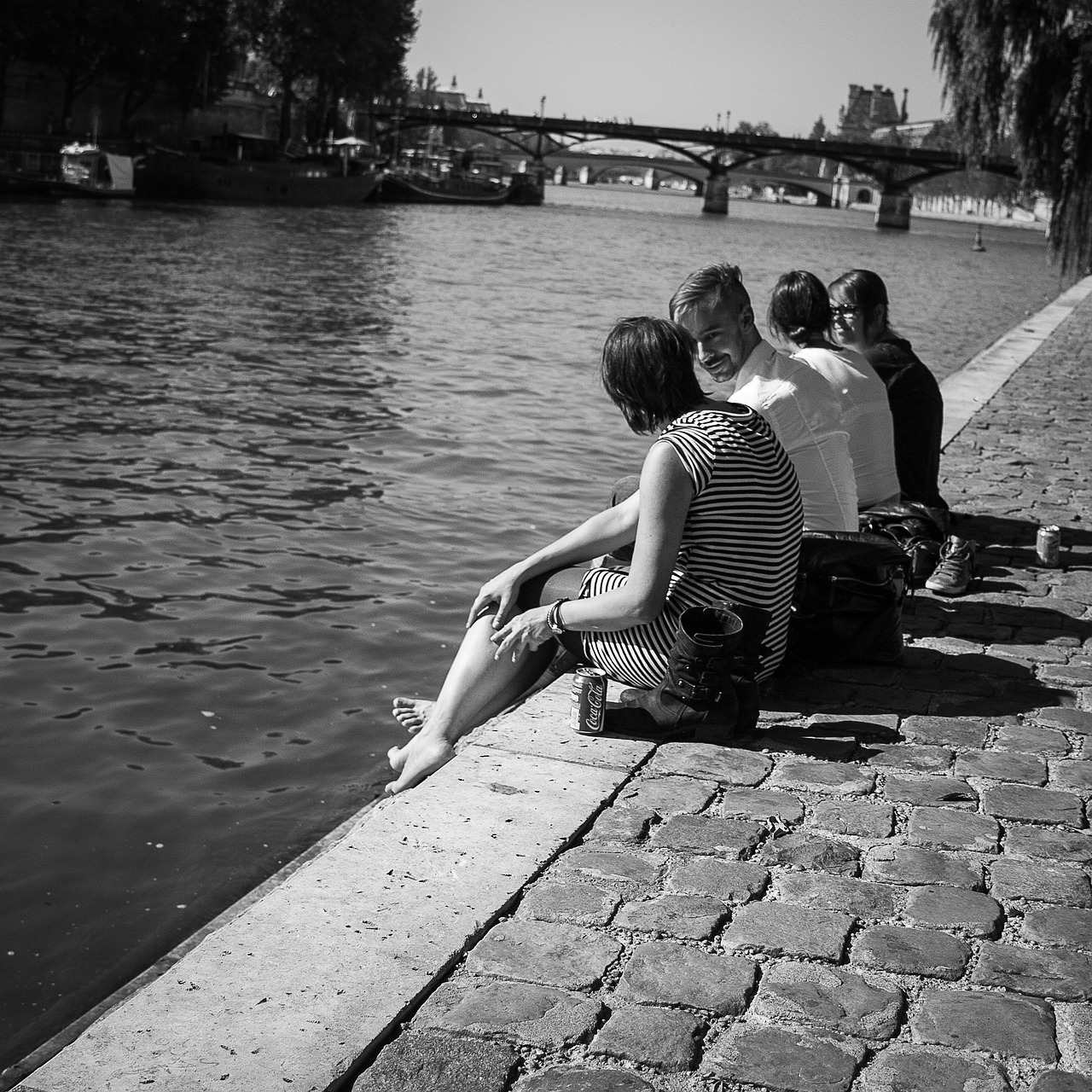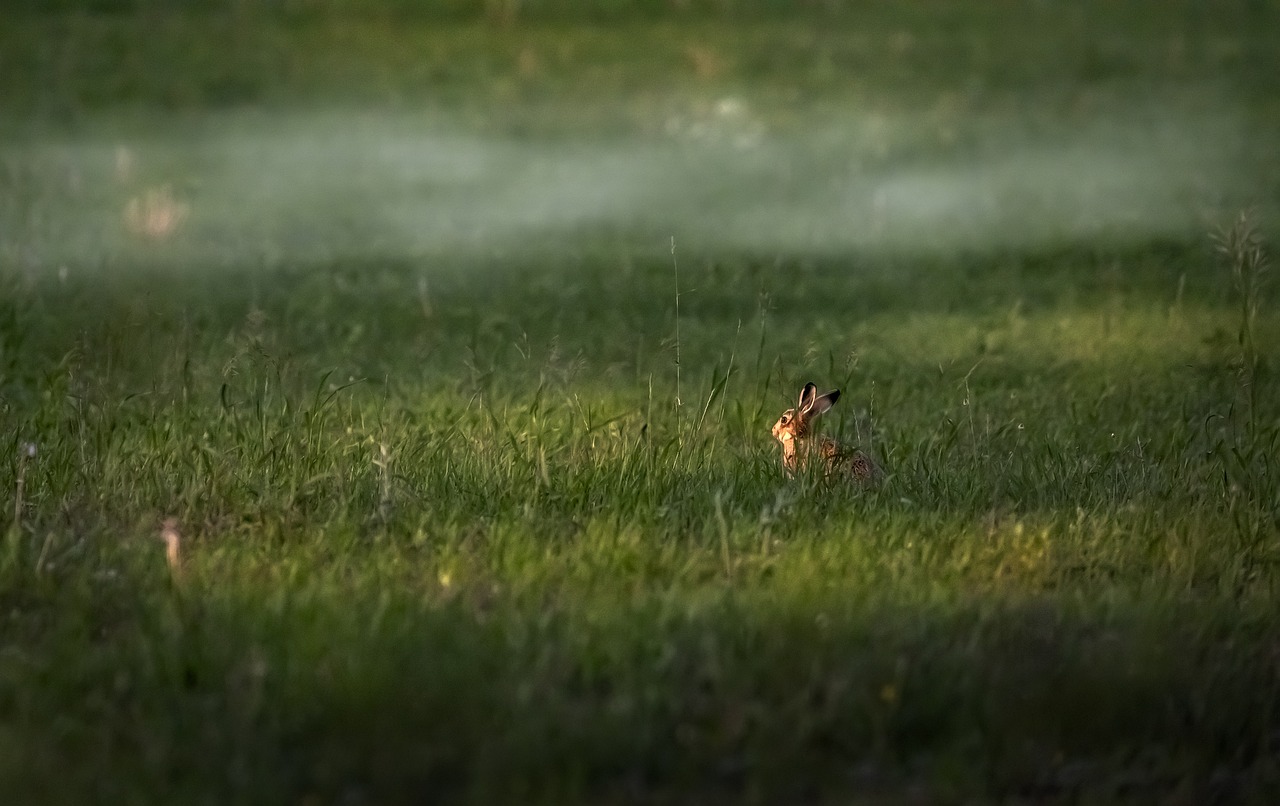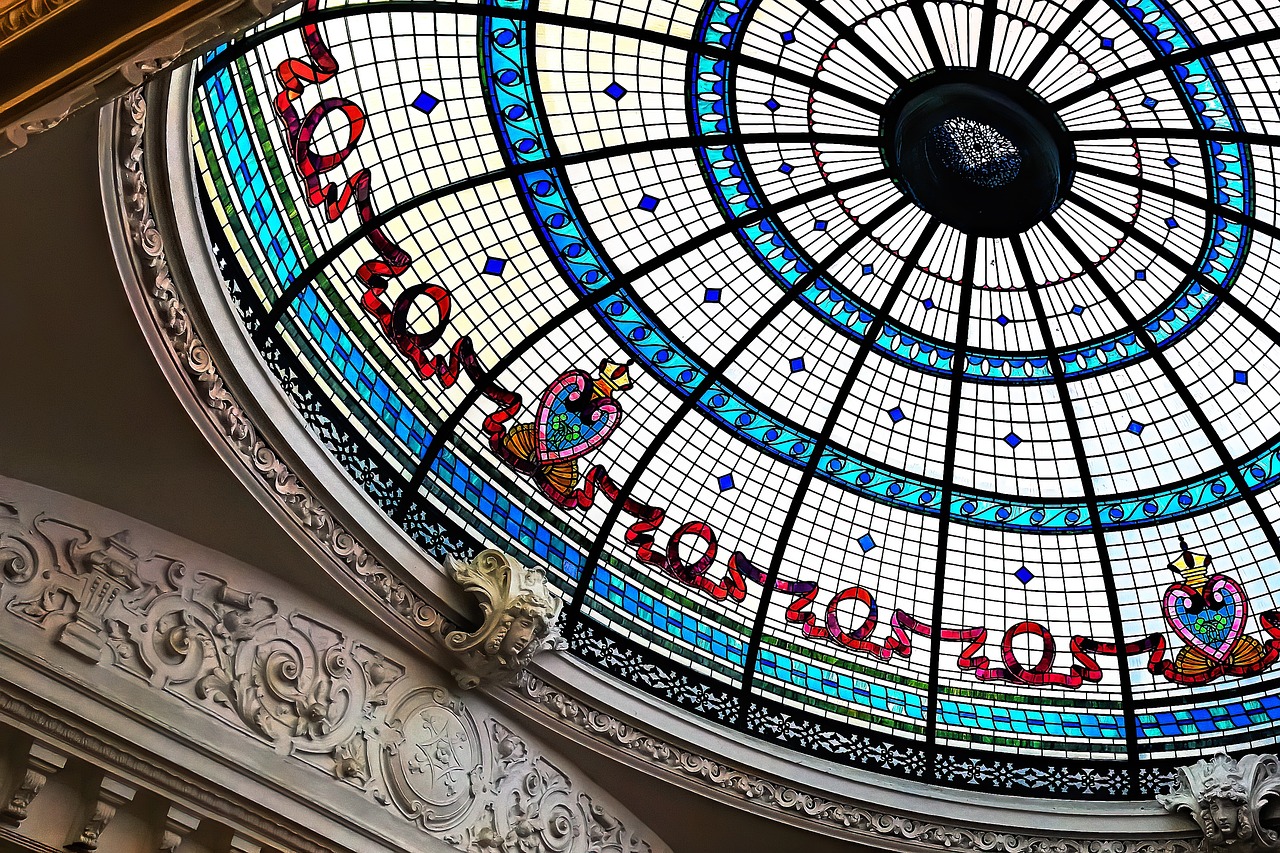How to Create Depth and Volume in Your Drawings
This article explores techniques to enhance depth and volume in your drawings, providing practical tips and methods to bring your artwork to life with dimensionality and realism. When you look at a drawing, what captures your attention the most? Is it the intricate details, the vibrant colors, or the way the objects seem to pop out of the paper? Achieving that **depth and volume** is not just an artistic skill; it’s a magical process that transforms flat sketches into vibrant, three-dimensional representations. Let’s dive into the world of drawing and uncover the secrets to making your artwork leap off the page!
Perspective is crucial for creating depth in drawings. Think of perspective as the lens through which you view the world; it shapes how we perceive distance and space. Without a solid grasp of perspective, your drawings may appear flat and lifeless. This section will cover the basics of linear and atmospheric perspective, helping you understand how to manipulate space and distance effectively. By mastering these techniques, you can create an illusion of depth that pulls viewers into your artwork.
Linear perspective is all about the **mathematics of space**. It involves using vanishing points and horizon lines to guide the viewer's eye through your drawing. Imagine standing on a long, straight road; as it stretches toward the horizon, the sides seem to converge. This is the essence of linear perspective. To effectively use this technique, start by establishing a horizon line and determining your vanishing points. From there, draw lines that lead to these points, creating a framework for your objects. The result? A stunning sense of depth that makes your drawings feel more realistic and engaging.
On the other hand, **atmospheric perspective** relies on the subtle interplay of color and clarity to create depth. Have you ever noticed how distant mountains appear lighter and less detailed than those up close? This phenomenon is due to the atmosphere between the viewer and the objects. To apply this technique, use softer, lighter colors for elements that are further away and bolder, more saturated colors for those in the foreground. By manipulating color and clarity, you can achieve a remarkable sense of distance in your drawings, making them come alive with depth.
Effective shading and lighting techniques can significantly enhance the volume of your drawings. Imagine sculpting with light; it defines the shapes and contours of your subjects. This section will discuss how to use light and shadow to create three-dimensional forms. By understanding how light interacts with objects, you can add realism and depth to your artwork. Remember, it’s not just about where the light hits; it’s also about where the shadows fall. This interplay creates a dynamic tension that can elevate your drawings to the next level.
There are various shading techniques you can explore, each adding its unique touch to your artwork. Here are a few popular methods:
- Hatching: Using parallel lines to create areas of shading.
- Cross-hatching: Layering lines in different directions to build depth.
- Stippling: Creating texture through dots, which can add intricate detail to your work.
Experimenting with these techniques will allow you to find your personal style while enhancing the depth and volume in your drawings.
Understanding how light interacts with objects is essential for creating realistic volume. Think of light as a sculptor that shapes your drawing. Identify your light sources—whether natural or artificial—and observe how they cast shadows and highlight certain areas. By accurately depicting these light sources, you can create a sense of volume that makes your subjects appear three-dimensional. Remember, the positioning of your light can dramatically change the mood and depth of your drawing.
Composition plays a vital role in creating depth and volume. It’s not just about what you draw, but how you arrange those elements on the page. This section will discuss strategies for arranging elements in your artwork to enhance dimensionality. A well-composed drawing can guide the viewer’s eye and create a narrative within your artwork, adding layers of meaning and depth.
To create a sense of space, it’s essential to effectively use foreground, middleground, and background elements. The foreground grabs the viewer's attention, while the middleground provides context, and the background adds depth. By carefully arranging these layers, you can create a rich, immersive experience that invites viewers to explore your artwork.
Discover how framing can guide the viewer’s eye and add depth to your artwork, making your subjects stand out in a three-dimensional space. Think of framing as a way to highlight the star of your drawing, directing focus and enhancing its presence. Whether through natural elements or compositional techniques, framing can add a layer of sophistication to your work.
Q: What is the best way to practice perspective in drawing?
A: Start with simple shapes and gradually introduce more complex forms. Use reference images to help understand how perspective works in real life.
Q: How can I improve my shading techniques?
A: Practice different shading methods like hatching, cross-hatching, and stippling. Experiment with varying pressure on your pencil to create different tones.
Q: What materials are best for creating depth in drawings?
A: Use a range of pencils for shading, and consider colored pencils or watercolors for atmospheric perspective. High-quality paper can also enhance the final result.

Understanding Perspective
When it comes to drawing, perspective is the magic ingredient that transforms a flat image into a captivating scene filled with depth and dimension. Imagine standing at the edge of a vast canyon; the layers of rock receding into the distance create a stunning visual experience. In art, we replicate this effect through two primary techniques: linear perspective and atmospheric perspective. Understanding these concepts is essential for any artist aiming to breathe life into their drawings.
Linear perspective revolves around the idea of vanishing points and horizon lines. Picture yourself on a long, straight road that seems to converge at a single point on the horizon. This is your vanishing point, the spot where parallel lines appear to meet as they recede into the distance. By placing this point strategically in your artwork, you can guide the viewer's eye and create a sense of depth. For instance, if you're drawing a cityscape, the buildings can be arranged along this imaginary line, emphasizing their height and distance from the viewer.
On the other hand, atmospheric perspective is all about the subtleties of color and clarity. Think about how distant mountains appear lighter and less defined than those close to you. This phenomenon occurs because the atmosphere scatters light, causing colors to fade as they move further away. To apply this technique in your drawings, you can use lighter hues and softer edges for elements in the background, while keeping foreground objects richer in color and detail. This contrast not only enhances the illusion of depth but also adds a layer of realism to your work.
Both linear and atmospheric perspectives are powerful tools for artists. However, mastering them requires practice and experimentation. Don't hesitate to sketch multiple versions of the same scene, adjusting your vanishing points and color palettes until you achieve the desired effect. Remember, the goal is to create a sense of space that invites viewers to step into your world. By understanding and applying these perspective techniques, you'll be well on your way to creating drawings that are not just visually appealing but also rich in dimensionality.
To further clarify these concepts, consider the following table that summarizes the key differences between linear and atmospheric perspective:
| Aspect | Linear Perspective | Atmospheric Perspective |
|---|---|---|
| Definition | Technique that uses vanishing points and horizon lines to create depth. | Technique that uses color and clarity to indicate distance. |
| Visual Effect | Creates a strong sense of depth and dimension. | Softens background elements, enhancing the illusion of distance. |
| Application | Best for architectural and structured scenes. | Ideal for landscapes and natural scenes. |
In conclusion, understanding perspective is a fundamental skill that every artist should develop. By mastering both linear and atmospheric techniques, you can create drawings that not only look realistic but also evoke emotion and intrigue. So grab your sketchbook, start experimenting with these concepts, and watch as your artwork transforms into something truly remarkable!
Q1: What is the difference between linear and atmospheric perspective?
A1: Linear perspective uses vanishing points and horizon lines to create depth, while atmospheric perspective relies on color and clarity to indicate distance.
Q2: How can I practice perspective in my drawings?
A2: You can practice by sketching scenes with clear vanishing points or by painting landscapes that involve distant elements. Experimentation is key!
Q3: Do I need to use both types of perspective in every drawing?
A3: Not necessarily! Depending on your subject matter, you may choose to emphasize one type of perspective over the other. However, combining both can enhance the overall depth of your artwork.

Linear Perspective Techniques
When it comes to creating depth in your drawings, understanding linear perspective is absolutely essential. This technique revolves around the concept of vanishing points and horizon lines, which work together to create the illusion of space and distance on a flat surface. Imagine standing on a long, straight road that seems to converge at a point far in the distance; that’s the essence of linear perspective. By mastering this technique, you can transform your drawings from flat images into dynamic representations of three-dimensional space.
The first step in utilizing linear perspective is to establish your horizon line. This line represents the viewer’s eye level and serves as a reference point for all other elements in your drawing. Once you have your horizon line in place, you can determine the placement of your vanishing points. A vanishing point is where parallel lines appear to converge, creating the illusion of depth. For example, if you're drawing a road, the sides of the road will angle toward the vanishing point, making it look like it extends into the distance.
Here's a quick breakdown of how to implement linear perspective in your artwork:
- Identify the horizon line: This is crucial as it sets the stage for your perspective.
- Determine the vanishing point: Depending on your composition, you might have one, two, or even three vanishing points.
- Draw guidelines: Use light lines to sketch out how your objects will recede toward the vanishing point, ensuring that they maintain consistent angles.
One common method is one-point perspective, where all lines converge at a single vanishing point. This technique is often used for drawings of roads, railways, or interiors of rooms. For instance, if you were to draw a railway track, you would draw two parallel lines that get closer together as they approach the vanishing point on the horizon line. This not only gives a sense of depth but also draws the viewer’s eye toward the center of the composition.
Another approach is two-point perspective, which is particularly useful for depicting objects at an angle. Here, you would place two vanishing points on the horizon line. This technique is great for drawing buildings or boxes, as it allows for a more dynamic view that captures the viewer's attention. You would start by sketching the edges of the object, then draw lines from each corner to the respective vanishing points, creating a more realistic representation of space.
To further enhance your understanding of linear perspective, consider experimenting with three-point perspective. This technique adds a vertical vanishing point, which can be particularly effective for tall structures like skyscrapers. When using three-point perspective, you’ll find that the lines not only converge horizontally but also vertically, which can create a dramatic and immersive effect in your drawings.
In summary, mastering linear perspective is about understanding how objects relate to one another in space. By carefully placing your horizon line and vanishing points, and using guidelines to direct the viewer's eye, you can create stunning drawings that possess a sense of depth and realism. So grab your pencil, set your horizon line, and start exploring the fascinating world of linear perspective!
Q: What is the difference between one-point and two-point perspective?
A: One-point perspective uses a single vanishing point, ideal for scenes viewed straight on, while two-point perspective employs two vanishing points for more dynamic, angled views.
Q: How can I practice linear perspective?
A: Start by drawing simple shapes like boxes or roads using one-point and two-point perspective. Gradually increase complexity by adding more elements and experimenting with three-point perspective.
Q: Do I need to use a ruler for linear perspective?
A: While a ruler can help ensure accuracy, especially when establishing vanishing points and guidelines, don’t be afraid to practice freehand as well to develop your skills.

Atmospheric Perspective Explained
When it comes to creating depth in your drawings, atmospheric perspective is one of those magical techniques that can instantly elevate your artwork from flat to fabulous. Imagine standing on a mountain and gazing at the landscape below; the colors fade and become less distinct as they recede into the distance. This natural phenomenon is what atmospheric perspective aims to replicate on paper. Essentially, it involves manipulating the color, clarity, and contrast of objects to give the illusion of depth. But how exactly do we achieve this? Let’s dive into the nuts and bolts of this fascinating technique!
The first step in mastering atmospheric perspective is understanding how colors change with distance. As objects move further away, they tend to lose their saturation and appear more muted. For instance, think about how vibrant a blue sky looks when you're standing right under it compared to how it appears on the horizon. To replicate this in your drawings, consider using a color gradient. You can start with rich, saturated colors in the foreground and gradually transition to lighter, cooler hues as you move towards the background. This gradual shift not only creates a sense of distance but also adds a layer of realism to your work.
Another key aspect of atmospheric perspective is the use of clarity. Objects that are closer to the viewer should be depicted with more detail and sharper lines, while those in the distance should be softer and less defined. This technique mimics how our eyes perceive objects in real life, where the atmosphere blurs distant objects due to particles in the air. You can achieve this effect by using lighter strokes or even a blending technique to soften the edges of distant elements. The result? A stunning depth that draws viewers into your artwork.
To further illustrate these concepts, let’s look at a simple table that summarizes the key differences between foreground and background elements in terms of color, clarity, and detail:
| Aspect | Foreground | Background |
|---|---|---|
| Color | Rich and saturated | Light and muted |
| Clarity | Sharp and defined | Soft and blurred |
| Detail | High level of detail | Low level of detail |
Now, let’s not forget about the role of contrast in atmospheric perspective. High contrast in the foreground can help to create a striking focal point, while lower contrast in the background can suggest distance. For example, if you’re drawing a mountain range, make the peaks in the foreground bold and dark to capture attention, while the mountains in the distance should be lighter and less pronounced. This contrast not only enhances depth but also guides the viewer’s eye through the composition.
In conclusion, atmospheric perspective is a powerful tool in your artistic arsenal. By understanding how to manipulate color, clarity, and contrast, you can create stunning drawings that come alive with depth and dimensionality. So the next time you pick up your pencil, remember to look beyond the surface and explore the atmospheric layers that can transform your artwork into a captivating visual experience!
- What is atmospheric perspective? It's a technique used in art to create the illusion of depth by manipulating color and clarity.
- How can I practice atmospheric perspective? Start by sketching landscapes and gradually apply lighter colors and softer details for distant objects.
- What materials are best for demonstrating atmospheric perspective? Watercolors or soft pastels are excellent for blending colors and achieving the desired effects.

Shading and Lighting
When it comes to creating depth and volume in your drawings, are your best friends. Imagine trying to sculpt a figure out of clay without knowing how to cast shadows—your creation would look flat and lifeless. Similarly, in drawing, the way you handle light and shadow can transform a simple sketch into a vibrant, three-dimensional piece of art. Think of shading as the *makeup* that highlights the features of your drawing, enhancing its natural beauty and giving it character.
To master shading and lighting, you need to understand how light interacts with objects. Light sources can be natural, like the sun, or artificial, like a lamp. Each light source creates shadows and highlights that define the form of your subject. For instance, a strong light source will cast harsh shadows, while a softer light source will create more subtle gradations. This interplay between light and shadow adds a layer of realism to your work, making it feel as if you could reach out and touch it.
Let’s break down some key techniques that can help you effectively use shading and lighting:
- Highlighting: This is where the light hits your subject the most. It’s crucial to leave areas of your drawing lighter to represent these highlights. Think of them as the *sparkle* in an eye or the *glow* on a shiny surface.
- Shadows: Shadows fall on the opposite side of the light source and help to ground your subject in space. They add weight and stability, making your drawing feel more real. Remember, shadows can vary in intensity; a shadow cast by a strong light will be darker and sharper than one cast by a softer light.
- Reflected Light: Sometimes, light bounces off nearby surfaces and illuminates the shadowed areas of your subject. This subtle effect can add depth and complexity to your drawing, making it feel more dynamic.
To illustrate these concepts further, consider the following table that summarizes different aspects of shading and lighting:
| Aspect | Description | Effect on Drawing |
|---|---|---|
| Highlight | Brightest area where light hits | Creates a sense of volume and dimension |
| Core Shadow | Darkest part of the object, away from light | Defines the form and structure |
| Cast Shadow | Shadow that falls on another surface | Grounds the object in space |
| Reflected Light | Light bouncing back into the shadowed area | Adds subtlety and depth |
As you practice these techniques, it’s essential to keep in mind that shading is not just about making things darker. It’s about creating a visual narrative that guides the viewer’s eye and enhances the overall impact of your artwork. Experiment with different light sources and observe how they affect your subjects. Try drawing the same object under various lighting conditions to see how dramatically it changes the perception of depth and volume.
In conclusion, effective shading and lighting can be the difference between a flat drawing and one that truly pops off the page. By understanding how to manipulate light and shadow, you can breathe life into your artwork, making it not only more realistic but also more engaging. So grab your pencils, experiment with these techniques, and watch your drawings transform into stunning three-dimensional representations of your imagination!
Q: What is the best way to practice shading?
A: Start with simple shapes like spheres and cubes. Experiment with different light sources and practice applying highlights, core shadows, and cast shadows to create depth.
Q: How do I choose the right pencil for shading?
A: Use a range of pencils from hard (H) to soft (B). Hard pencils are great for fine lines and lighter shades, while soft pencils are perfect for creating rich, dark shadows.
Q: Can I use colored pencils for shading and lighting?
A: Absolutely! Colored pencils can add an extra layer of depth and vibrancy to your drawings. Just remember to blend colors to create smooth transitions between light and shadow.

Types of Shading Techniques
When it comes to adding depth and volume to your drawings, shading techniques are your best friends. They breathe life into your artwork, transforming flat images into vibrant, three-dimensional forms. But with so many techniques to choose from, where do you even start? Let’s dive into some of the most popular shading techniques that can elevate your drawing game.
One of the most fundamental techniques is hatching. This involves drawing a series of parallel lines close together to create an area of shadow. The closer the lines are, the darker the area appears. It’s like creating a cozy little nook in your drawing where light can’t quite reach. You can also vary the thickness and angle of the lines to create different effects. For instance, using thicker lines can give a heavier, more profound shadow, while thinner lines might suggest a softer, more delicate texture.
Next up is cross-hatching, which takes hatching to the next level. Instead of just one set of parallel lines, you layer another set of lines on top, crossing over the first. This technique is fantastic for adding complexity and richness to your shadows. Think of it like weaving a tapestry; each layer adds depth and character, making your drawing more engaging. Cross-hatching can also be adjusted in density to create varying degrees of shadow, allowing for a more nuanced representation of light and form.
If you’re looking for something a bit different, consider stippling. This technique uses small dots to build up shading. It’s meticulous but incredibly rewarding! By varying the number of dots in an area, you can create soft gradients and subtle shadows. Imagine painting with tiny stars; the more you cluster them together, the darker the area appears. Stippling is perfect for creating textures like skin or fabric, where the softness of the shading can add a touch of realism.
In addition to these techniques, don’t forget about the importance of blending. This is where things get really exciting! Blending involves smoothing out your shading to create soft transitions between light and dark areas. You can use tools like blending stumps, your fingers, or even a soft cloth to achieve this. It’s like frosting a cake; you want those layers to meld beautifully without any harsh lines. Blending is particularly effective for achieving realistic skin tones or the soft curves of a fruit.
Finally, let’s not overlook the power of light and shadow. Understanding how light interacts with objects is crucial for effective shading. For instance, the direction from which light hits an object will dictate where the shadows fall. By keeping this in mind, you can create a more convincing three-dimensional effect. Consider using a simple table to visualize this:
| Light Source Direction | Shadow Location | Effect on Volume |
|---|---|---|
| Top Left | Bottom Right | Creates a sense of depth |
| Front | Back | Enhances dimensionality |
| Side | Opposite Side | Defines contours and edges |
In conclusion, mastering these shading techniques will not only enhance the depth and volume of your drawings but also allow you to express your artistic vision more effectively. Whether you prefer the structured lines of hatching and cross-hatching, the delicate dots of stippling, or the soft transitions of blending, each technique has its place in the artist’s toolkit. So grab your pencils, experiment with these techniques, and watch your drawings come to life!
- What is the best shading technique for beginners? Hatching is a great starting point, as it helps you understand how to create shadows using simple lines.
- Can I combine different shading techniques? Absolutely! In fact, combining techniques like hatching and blending can create stunning effects.
- How do I know where to place shadows? Always consider the light source in your composition; shadows will be opposite the light source.
- Is it necessary to use special tools for shading? While tools can enhance your shading, your fingers or basic blending stumps can work just as well!

Understanding Light Sources
When it comes to creating realistic drawings, understanding light sources is absolutely essential. Light is the lifeblood of your artwork; it shapes how we perceive objects and gives them volume and dimension. Think about it: when you look at a three-dimensional object, what makes it look real? It's the interplay of light and shadow that creates that illusion of depth. So, how do you harness this power in your drawings? Let’s dive in!
First off, it's important to identify the type of light source you are working with. There are generally two categories: natural and artificial. Natural light comes from sources like the sun, while artificial light can be from lamps or other man-made objects. Each type casts different shadows and highlights, which can dramatically alter the perception of your drawing. For instance, sunlight creates hard shadows with sharp edges, while a lamp might create softer, more diffused shadows.
Next, consider the direction of your light source. Is it coming from above, below, or to the side? The direction of the light will dictate how shadows fall and where highlights appear. Imagine a simple ball; if you place a light source directly above it, the shadow will be directly beneath, creating a more rounded appearance. However, if you shift the light to the side, the shadow will elongate, giving the ball a different sense of volume. This is where the magic happens—by manipulating light direction, you can create a variety of effects that enhance the three-dimensionality of your subject.
In addition to direction, the intensity of the light also plays a significant role. A strong light source will produce stark contrasts between light and dark areas, while a softer light source will create a more gradual transition. This is crucial for achieving the illusion of depth. You can use this principle to your advantage by deciding whether you want your drawing to have a dramatic flair or a more subtle, gentle vibe.
Now, let’s not forget about the color of the light. Different light sources emit different colors, which can affect the overall tone of your drawing. For example, a warm light, like that from a sunset, will cast golden hues, while cool light, such as moonlight, will give a bluish tint. This subtlety can add an extra layer of emotion and atmosphere to your artwork, making it feel more alive.
To summarize, understanding light sources is essential for creating depth and volume in your drawings. Here’s a quick recap:
- Types of Light: Natural vs. Artificial
- Direction: Where is the light coming from?
- Intensity: How strong is the light?
- Color: What hue does the light cast?
By mastering these elements, you’ll be able to create stunning, lifelike drawings that leap off the page. So grab your pencils and start experimenting with different light sources—your artwork will thank you!

Composition and Layout
When it comes to creating depth and volume in your drawings, are absolutely vital. Think of composition as the stage where your artwork performs; it’s not just about what you draw, but how you arrange everything on that stage. A well-composed drawing guides the viewer’s eye, leading them through the piece and creating a sense of dimensionality that can make your artwork feel alive. So, how do you achieve that? Let’s dive deeper into the strategies that can elevate your drawings.
First off, understanding the roles of foreground, middleground, and background is crucial. Each of these layers contributes to the overall perception of depth in your artwork. The foreground is where you place your main subjects, allowing them to command attention. The middleground serves as a transition, connecting the foreground to the background, while the background sets the scene and adds context. When these elements are used effectively, they create a rich tapestry of space that draws the viewer in. Here’s a quick breakdown:
| Layer | Purpose | Tips for Use |
|---|---|---|
| Foreground | Main focus of the drawing | Use contrasting colors and details |
| Middleground | Connection between foreground and background | Use softer details and colors |
| Background | Sets the scene | Keep it less detailed and muted |
Next, let’s talk about framing your subject. Just like a picture frame enhances a photo, a well-thought-out frame can significantly add depth to your artwork. By incorporating natural elements like trees, arches, or even abstract shapes, you can create a visual boundary that draws the viewer's eye toward the focal point. This technique not only adds interest but also enhances the three-dimensional feel of your piece. Think of it as creating a window into your world—what do you want the viewer to see?
Now, consider the rule of thirds. This classic composition technique involves dividing your canvas into a grid of nine equal parts, using two horizontal lines and two vertical lines. Placing key elements along these lines or at their intersections can create a more dynamic and engaging composition. It’s like guiding the viewer’s gaze with invisible strings, leading them to explore every nook and cranny of your artwork. Remember, the goal is to create a balanced yet interesting layout that invites exploration.
Finally, don’t forget about the importance of negative space. This is the area around and between your subjects. While it might seem counterintuitive, negative space can actually enhance the overall composition by providing breathing room and emphasizing your main subjects. Think of it as the silence in a song; it’s just as important as the notes themselves. By skillfully managing negative space, you can create a more harmonious and balanced piece that feels complete.
- What is the importance of composition in drawing? Composition helps to arrange elements in a way that creates balance, focus, and depth, making your artwork more engaging.
- How can I improve my understanding of perspective? Practice sketching simple shapes in different perspectives, and study how light and shadow affect their appearance.
- What are some common mistakes in composition? Common mistakes include overcrowding the canvas, neglecting negative space, and failing to create a clear focal point.
- Can I use digital tools for composition? Absolutely! Digital art software often includes grid features and layering options that can help you experiment with composition more easily.

Using Foreground, Middleground, and Background
When it comes to creating depth in your drawings, understanding the roles of the foreground, middleground, and background is absolutely essential. Think of your artwork as a stage where each layer plays a specific role, contributing to the overall narrative and depth of the scene. The foreground is where your viewer's eye is first drawn, often containing the most detail and vibrant colors. This area can include objects or characters that are close to the viewer, creating an immediate sense of intimacy and engagement.
On the other hand, the middleground serves as a transition zone, bridging the gap between the foreground and background. It often contains elements that are less detailed than those in the foreground but still play a crucial role in establishing depth. For instance, if you’re drawing a landscape, the trees or buildings in the middleground might be less defined than the flowers or people in the foreground, but they help to create a sense of distance and perspective.
Finally, the background is where the magic of illusion happens. It sets the scene and provides context for the foreground and middleground elements. While it may seem less important, the background can dramatically affect the overall composition. By using lighter colors or less detail in the background, you can push it back in space, effectively enhancing the depth of your drawing. This technique is often referred to as atmospheric perspective, where distant objects appear lighter and less distinct than those that are closer.
To effectively utilize these three layers, consider the following tips:
- Layering: Start with the background and build your way to the foreground. This helps you maintain proper proportions and perspective.
- Overlapping: Allow elements from the foreground to overlap with those in the middleground. This creates a natural sense of depth.
- Size Variation: Objects in the foreground should appear larger than those in the background. This simple trick can enhance the three-dimensional feel of your artwork.
- Color and Detail: Use vibrant colors and intricate details in the foreground, while opting for muted tones and less detail in the background.
By thoughtfully arranging elements in your drawing, you can guide the viewer's eye through the composition, creating a journey that feels both immersive and dynamic. Remember, it's not just about filling space; it's about creating a visual narrative that draws people in and makes them feel as though they are part of the scene. So the next time you sit down to draw, take a moment to consider how you can use the foreground, middleground, and background to enhance the depth and volume of your artwork.
Q1: How can I practice using foreground, middleground, and background in my drawings?
A1: Start by sketching simple scenes with distinct foreground, middleground, and background elements. Focus on layering and varying sizes to create depth. Gradually increase complexity as you become more comfortable with these concepts.
Q2: Can I use these techniques in digital art as well?
A2: Absolutely! The principles of foreground, middleground, and background apply to both traditional and digital art. Use layers in your software to separate these elements and experiment with opacity and blending modes to enhance depth.
Q3: What are some common mistakes to avoid when creating depth?
A3: One common mistake is not varying the size and detail of objects. Ensure that your foreground elements are more detailed and larger than those in the background. Additionally, be cautious of using too many bright colors in the background, which can flatten the composition.

Framing Your Subject
Framing your subject is like setting the stage for a captivating performance; it guides the viewer’s eye and creates a sense of depth that pulls them into your artwork. When you think about framing, consider how a photographer uses a camera to focus on a subject. In drawing, you can achieve a similar effect by using various elements in your composition to create a 'frame' around your subject. This not only emphasizes the focal point but also enhances the overall dimensionality of the piece.
One effective method of framing is to utilize natural elements within the scene. For instance, branches of a tree or a doorway can serve as a frame that directs attention towards your main subject. Imagine standing in a forest and looking at a stunning view through a break in the trees; that’s the kind of effect you want to replicate in your drawings. By incorporating these natural frames, you create layers that add depth, making the viewer feel as if they are peering into a three-dimensional space.
Another technique is to think about the edges of your canvas or paper. You can use the borders to your advantage by allowing them to interact with your subject. For example, if your subject is a person, you might let their arm extend beyond the edge of the frame, creating a dynamic sense of movement and suggesting that there is more to the scene than what is visible. This can evoke curiosity and draw the viewer deeper into the narrative of your artwork.
In addition to using physical elements, consider the use of negative space. Negative space is the area around and between the subjects of an image. By carefully planning where to leave empty space, you can create a striking contrast that makes your subject pop. This technique not only frames your subject but also adds a sense of balance and harmony to your composition. Think of it as the silent partner in your drawing; it enhances your subject without stealing the spotlight.
Lastly, don’t forget about color and contrast when framing your subject. Using contrasting colors can help your subject stand out against the background. For instance, if your subject is a bright yellow flower, placing it against a dark green foliage creates an eye-catching frame that draws the viewer's attention immediately. This interplay of color can significantly enhance the perception of depth and volume in your artwork.
To summarize, framing your subject is a powerful technique that can elevate your drawings from flat representations to dynamic, engaging pieces of art. By incorporating natural elements, utilizing edges creatively, considering negative space, and playing with color contrast, you can create a compelling visual narrative that invites viewers to explore every corner of your artwork. Remember, the goal is to create a sense of depth that makes your audience feel as if they could step right into the scene.
- What is the importance of framing in drawing? Framing helps to guide the viewer's eye to the focal point of the artwork, enhancing depth and engagement.
- How can I create depth using negative space? By leaving areas of your drawing empty, you can create contrast that emphasizes your subject and adds balance.
- Can color be used as a framing technique? Absolutely! Using contrasting colors can help your subject stand out and create a more dynamic composition.
Frequently Asked Questions
- What is perspective in drawing?
Perspective is a technique used to create the illusion of depth and space in a drawing. It helps artists depict objects as they appear to the eye, making them look three-dimensional. By understanding linear and atmospheric perspective, you can manipulate how space and distance are perceived in your artwork.
- How can I improve my shading techniques?
Improving your shading techniques involves practicing different methods such as hatching, cross-hatching, and stippling. These techniques can add texture and depth to your drawings. Additionally, pay attention to the light source in your artwork, as it plays a crucial role in how shadows and highlights are created.
- What is atmospheric perspective?
Atmospheric perspective refers to the effect that distance has on the appearance of objects. As objects recede into the background, they often appear lighter and less detailed due to the atmosphere between the viewer and the object. By applying this technique, you can create a sense of depth in your drawings.
- Why is composition important in drawing?
Composition is vital because it determines how elements are arranged in your artwork. A well-composed drawing can guide the viewer's eye and create a sense of balance and harmony. Using techniques such as foreground, middleground, and background can enhance the dimensionality of your work.
- How do I create depth with foreground and background elements?
To create depth, use foreground elements to draw attention and background elements to provide context. This layering effect helps to establish a sense of space in your drawing. Consider the size, detail, and color of objects as they relate to their position in the composition.
- What are some common mistakes to avoid when drawing?
Common mistakes include neglecting perspective, using inconsistent light sources, and overcrowding your composition. To avoid these pitfalls, regularly analyze your work and seek feedback. Practicing the techniques discussed will also help you refine your skills and create more compelling drawings.



















